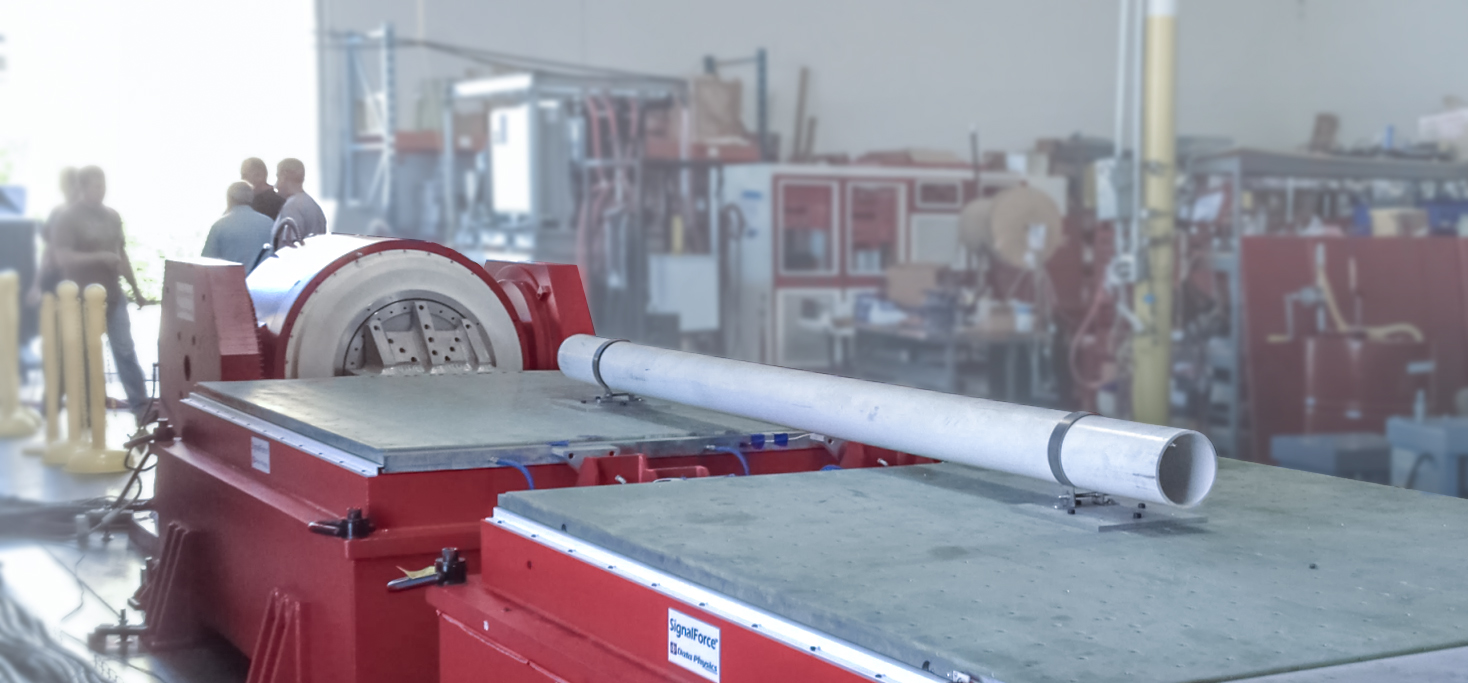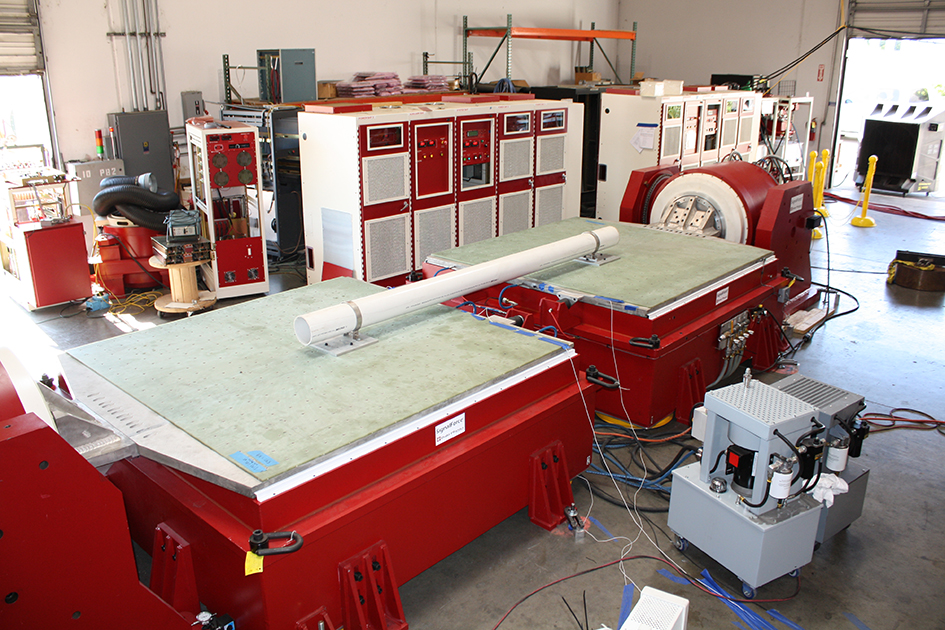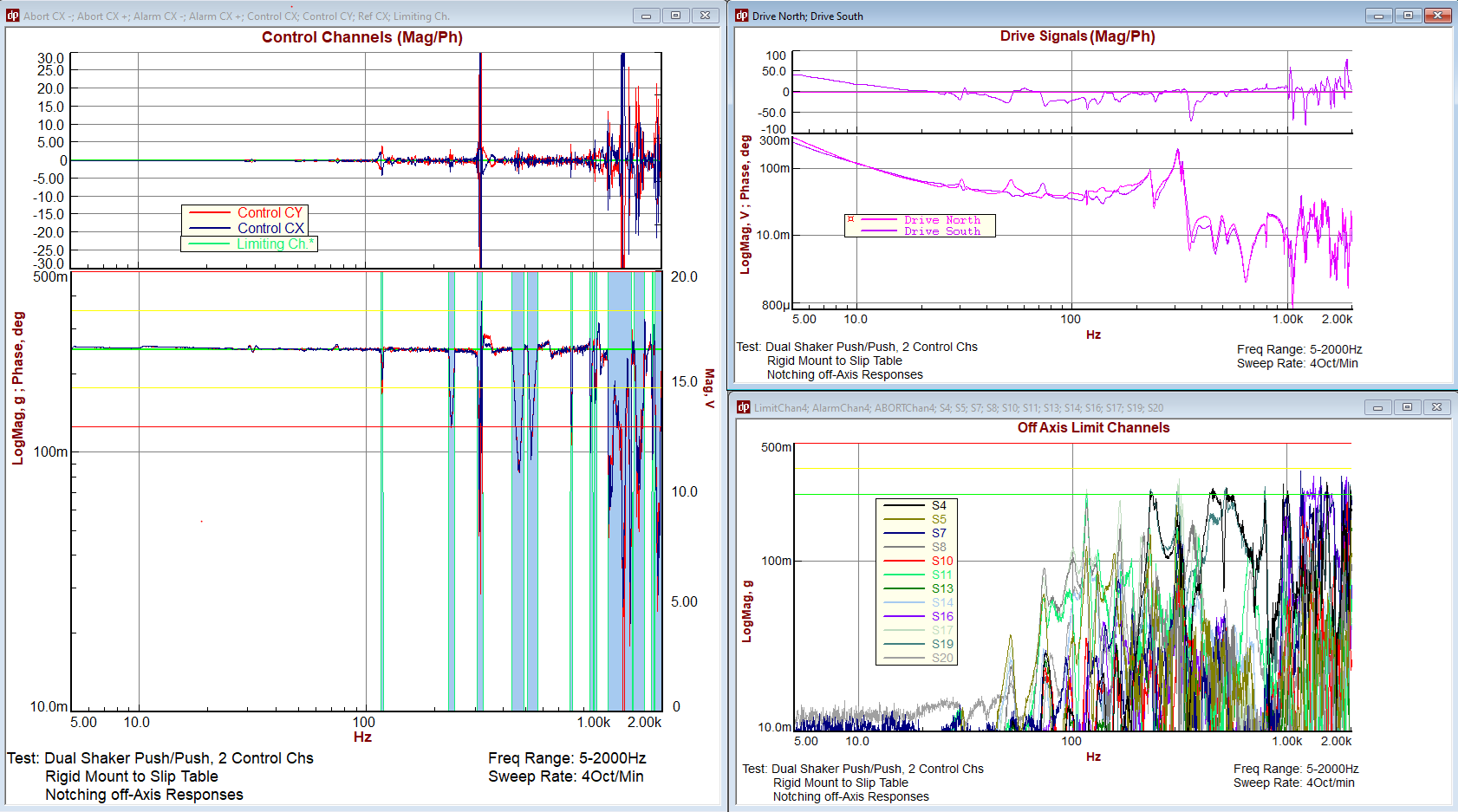Dual Shaker Testing
Controlling Two Shakers Together Doubles Your Available Force without the Reduction in Frequency Range of a Single Larger Shaker System
Data Physics 800 Series vibration controller can control any dual shaker configuration or orientation. Whether they are both pushing or pulling, in the horizontal or vertical, or even if your amplifiers/shakers are different – control is always possible. The 800 Series controller automatically compensates for the differences in amplifiers/shakers, resonance frequency, overturning moments, or off-centered masses. No need to “phase match” or use external electronics to make your shakers appear more similar.

Do You Really Have True MIMO Dual Shaker Control?
There are many terms manufacturers use to hide the fact that they are using a single shaker control algorithm to drive multiple shakers. Doing so puts your shaker setup at risk of damage – and you do not get the benefits of using more than one shaker. Telltale signs of a non-MIMO controller are:
Requiring "matched" amps, or perfectly centered mass.
When a controller requires amplifiers or shakers to be “matched” it means the controller actually does not discriminate between the two amps/shakers. The same applies to the centering of the test mass.
Can't control phase past a resonance.
If phase can not be maintained past the first table resonance, the controller is likely a single axis controller. A MIMO controller can maintain phase synchronization through structural resonances.
Running multiple "control loops"
Some controllers drive each shaker with multiple control loops. Running multiple control loops does not adequately take into account cross coupling between the shakers – and such algorithms struggle in all but the most ideal dual shaker scenarios.
It can control Multi-Shaker, but not Multi-Axis.
Controlling two shakers pointed in the same axis or direction requires the same smarts as controlling two shakers pointed in different directions (translation + rotation). If a controller can control multiple shakers in the same direction but not in different directions – it is a telltale sign that it is not a true MIMO controller, and is using a simplified algorithm.
When controlling two shakers connected together without a proper MIMO controller you risk damaging your shakers or other test equipment. The shakers are driven in a way in which they can fight each other – applying extra stresses to the test article and setup and requiring additional force from the shakers. The armatures are not kept in phase – and they can easily be twisted and damaged. The 800 Series MIMO Controller also ensures resonances, structural dynamics, overturning moments, amplifier/shaker gain, off-center masses, and more are all accounted for and the shakers are driven in the optimal way.
Push/Pull Configuration
At low frequency there is only one degree of freedom – translation along the shakers’ axes. The controller must distribute the force between the two shakers evenly. If the force is not distributed evenly or the shakers driven out of phase, the test article and/or table will be overstressed and damaged.
At higher frequency, when modes of the table or test article are a factor, the shakers must be driven out of phase to guarantee the control accelerometers are in phase
At low frequency, the shakers must be driven carefully to ensure that the shakers remain in phase. If the shakers are driven out of phase, the test article or shakers will be damaged.
At higher frequency, the test article will go into resonance, and will try to drive the shakers out of phase with each other. The controller must carefully correct the phase of the controllers
Dual Shaker Sine with Limiting, Sweeping through Resonances
Rigidly mounted test structures can be easy to control below the first resonant frequency, but once you cross the first resonance the whole moving mass (Armature + table/DUT) is deforming together every cycle. Sweeping through and past resonances can be challenging, but the 800 Series MIMO Sine controller makes easy work of it.
Data from a 2-shaker, 4Oct/min 5-2000Hz Sine sweep with notching is shown below. Two ~20000lbf shakers were rigidly attached to a large, 14’x14′ T-shaped slip table. Two control points were kept in-phase near the armature’s attachment points. Since there were no off-axis shakers to counteract the 3D (off-axis) resonant deformation of the slip table, notching was applied to off-axis accelerometers at various points. The controller maintains control through the countless resonances, while preventing all control/limit channels from even reaching +3dB of the reference/notch profile. The only time phase deviates is when notching has taken the control levels into the noise floor, and phase can’t be quantified or controlled.
Notching performance is critical to protect valuable test articles – and the advanced notching algorithms in our MIMO Sine Controller outperform those seen in most single-shaker controllers.




